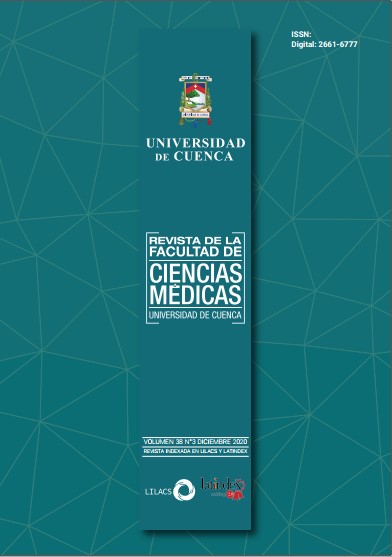Frequency and predictive factors for blank ureteroscopy, prospective observational study at the “Hospital Clínico Universidad de Chile”. 2016-2019
DOI:
https://doi.org/10.18537/RFCM.38.03.04Keywords:
ureterolithiasis, ureteroscopy, tomography x ray computedAbstract
Introduction: ureteroscopy today is the preferred therapeutic option for the treatment of ureteral lithiasis. The absence of lithiasis during the intraoperative; that is, spontaneous elimination prior to the intervention, it is described in 13.7% in international reports. In this study, the blank ureteroscopy rate was determined at the “Hospital Clínico Universidad de Chile”, as well as associated risk factors.
Methodology: patients with a history of prior renal colic and computed tomography (CT) of ureteral lithiasis, with surgical indication, who underwent semi-rigid ureteroscopy in a center, between 2016-2019, were included. Data related to the size, location and density of the lithiasis were collected through a form, as well as the time of symptoms, date of tomography prior to surgery and the presence or absence of lithiasis during the intervention. Categorical variables were analyzed through Chi-square test and continuous with Student's T-test.
Results: from a total of 156 patients, 24 (15.4 %) resulted in negative ureteroscopy. There was no statistic difference regarding age, gender or localization of the stone. We could determine two risk factors: 26% concerning the size of the stone, <7mm (p=0.017), and 23% as for the interval since the last CT taken, >30 days (p=0.006), increasing the risk of the group with both factors up to 35% (p=0.009).
Conclusions: according to our results, an <30 days updated, CT scan its fundamental in the preoperative study of <7mm ureteral stone in order to reduce the risk of negative ureteroscopy
Downloads
Published
Issue
Section
License
Copyright (c) 2021 Jaime Andrés Abad Espinoza, Cristian Andrés Acevedo Castillo, Enrique Antonio Ossandon Salas

This work is licensed under a Creative Commons Attribution-NonCommercial-ShareAlike 4.0 International License.
Copyright © Autors.

You are free to:
 |
Share — copy and redistribute the material in any medium or format |
 |
Adapt — remix, transform, and build upon the material for any purpose, even commercially. |
Under the following conditions:
 |
Attribution — You must give appropriate credit, provide a link to the licence, and indicate if changes were made. You may do so in any reasonable manner, but not in any way that suggests the licenser endorses you or your use. |
| NonCommercial — You may not use the material for commercial purposes. | |
| ShareAlike — If you remix, transform, or build upon the material, you must distribute your contributions under the same license as the original. |
| No additional restrictions — You may not apply legal terms or technological measures that legally restrict others from doing anything the licence permits. |






